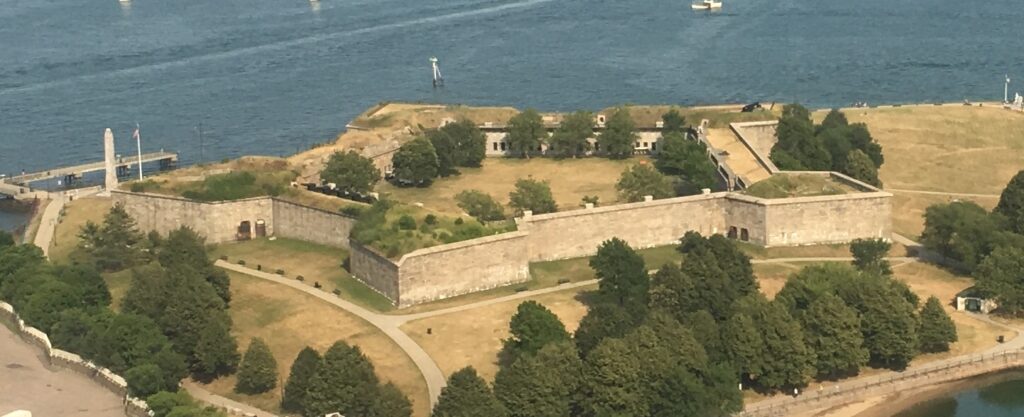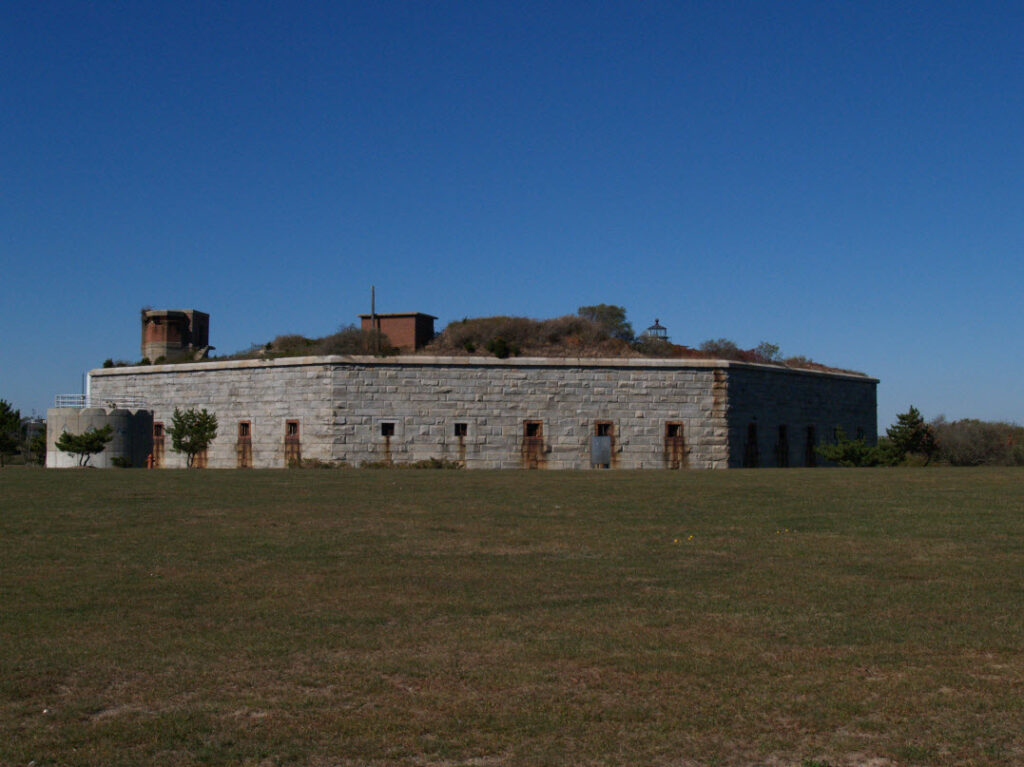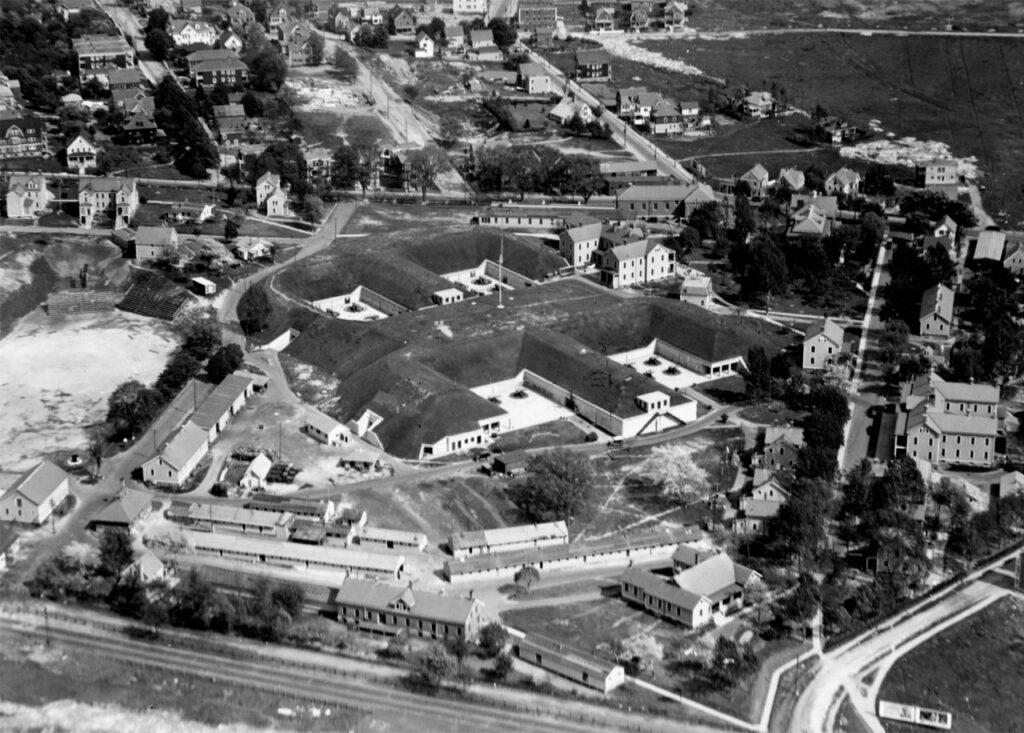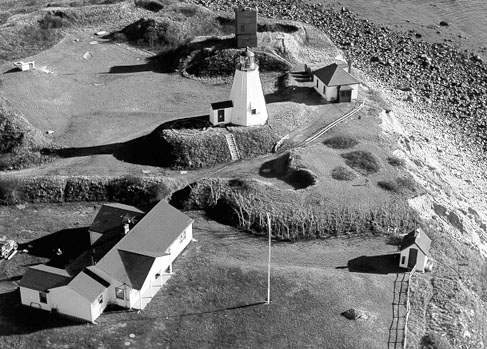When English settlers landed on Massachusetts shores, the region quickly emerged as a strategic stronghold in America’s defense tapestry. With its natural harbors and strategic vantage points, the coastline provided the ideal setting for establishing robust defenses.
The myriad of historic forts in Massachusetts highlight the state’s architectural prowess and underscore its significance in shaping America’s military legacy. Over the years, these forts have witnessed battles, guarded against potential invasions, and served as training grounds for countless soldiers.
Their enduring presence tells stories of bravery, innovation, and the determination of those who once walked their ramparts. From the Revolutionary War to subsequent global conflicts, Massachusetts has continuously showcased its commitment to the nation’s defense, and its forts provide a tangible link to those pivotal moments in history.
Historic Forts in Massachusetts
| 1. Fort Independence | 6. Fort Massachusetts |
| 2. Fort Rodman | 7. Fort Defiance |
| 3. Fort Lee | 8. Fort Washington |
| 4. Fort Banks | 9. Fort Revere |
| 5. Fort Pickering | 10. Fort Andrews |
1. Fort Independence

Fort Independence, prominently situated on Castle Island in South Boston, Massachusetts, is a star-shaped granite tower with a rich history. Initially known as “The Castle” during the English colonial era, the fort’s strategic importance led to multiple reconstructions.
The granite fortification visitors see today is the fifth rendition constructed from 1834 to 1851. Interestingly, Castle Island wasn’t always surrounded by water; it was transformed from an island to a peninsula when it joined the mainland in the early 20th century.
Fort Independence was an architectural marvel and a linchpin in Boston Harbor’s defense strategies. The American Revolution saw the fort under British control, providing them a strong foothold until they departed Boston in March 1776. It subsequently played a defensive role in the War of 1812 and the Civil War.
A tidbit that intrigues many is the connection of Edgar Allan Poe, the illustrious American writer, to the fort. Rumor has it that the chilling narrative of “The Cask of Amontillado” sprouted from his experiences at the defense.
Luminaries and Key Personnel
A series of distinguished figures have left their mark on Fort Independence. Captain Richard Gridley, pivotal during the Siege of Boston, was instrumental in shaping the fort’s early history.
Colonel Sylvanus Thayer, esteemed as the “Father of the U.S. Military Academy” at West Point, took the helm during its 19th-century refurbishments. Though his association was brief, Edgar Allan Poe endowed the fort with a cultural allure that still fascinates enthusiasts.
Contemporary Significance and Community Role
In modern times, Fort Independence and Castle Island have transitioned from a military stronghold to a cherished recreational spot.
Visitors to this historic site can embark on detailed tours, immersing themselves in its storied past, while the adjacent park offers a sanctuary for picnics, strolls, and fishing.
Today, the fort is not merely a monument of Boston’s militaristic heritage but a symbol of community bonding and shared experiences.
2. Fort Rodman

Fort Rodman, also known as the Fort at Clark’s Point, is in New Bedford, Massachusetts. Initially designed in the mid-19th century, its primary purpose was to protect New Bedford Harbor.
Although the fort was never fully completed as planned initially, it played a significant role throughout several conflicts, from the Civil War to World War II. The fort’s structure has undergone several changes over the years, with new batteries and updates to adapt to the changing needs of coastal defense.
Key Historical Events and Military Role
Throughout its existence, Fort Rodman has served in various capacities, highlighting its importance in American military history. During the Civil War, even before its completion, it served as a training ground for Union troops.
It was equipped for modern warfare in World War I, with new artillery pieces installed. World War II saw the fort integrated into the Eastern Defense Shield, with its guns guarding against potential enemy naval and aerial threats. Post-WWII, the fort’s military importance waned and it was eventually deactivated.
Prominent Personalities and Contributions
While Fort Rodman may not boast associations with renowned literary figures like Edgar Allan Poe at Fort Independence, it certainly had its share of dedicated military personnel who ensured its smooth operation.
The fort’s name pays homage to Lieutenant Colonel Logan Rodman, a New Bedford Civil War Union Army Officer. His contributions and those of countless unnamed soldiers and officers have left an indelible mark on its history.
Modern-Day Relevance
Today, Fort Rodman has transformed from a crucial coastal defense post to a place of historical interest and community gathering. The Fort Rodman Historic District includes the fort, surrounding military installations, and Fort Taber, a nearby smaller fortification.
Together, they form Fort Taber Park, a popular spot for residents and tourists. The park offers recreational activities, scenic views, and a chance to step back in time and explore the remnants of American military history.
The Fort Taber-Fort Rodman Military Museum further provides insights into the fort’s rich past and the broader history of coastal defenses in the U.S.
3. Fort Lee

While the more famous Fort Lee in New Jersey often overshadows it, Fort Lee in Salem, Massachusetts, has its unique historical story.
Situated on a bluff overlooking Salem Harbor, this coastal fortification, established in the late 17th century, played a crucial role in protecting the town and its maritime interests.
During its peak operational years, Fort Lee, along with other coastal defenses, served to protect Salem from potential naval threats.
While its most active years were during the American Revolutionary War and the War of 1812, it’s important to note that the fort’s relevance spanned across various conflicts.
Its artillery and strategic location enabled it to deter potential aggressors from making landfall or launching attacks against Salem and its harbor.
Major Upgrades and Modifications
Over time, as military technology and strategies evolved, so did Fort Lee. The fort underwent several modifications, especially in the late 18th and early 19th centuries.
Upgrades in artillery and fortifications ensured that it remained a relevant piece in the broader defense network of the region.
Present-day Significance and Fort Lee Park
Today, Fort Lee in Salem is a testament to the town’s maritime and military history. While the fortifications are no longer used for defense, the site has been transformed into Fort Lee Park. This public space, maintained by the city of Salem, offers residents and visitors panoramic views of Salem Harbor, Baker’s Island, and Marblehead.
Interpretative signs and markers provide insights into the fort’s historical significance. Apart from its historical appeal, the park also serves as a recreational space, ideal for picnics, relaxation, and soaking in the views of the harbor. As a protector of Salem and as a community gathering space, the fort’s legacy endures in the modern era.
4. Fort Banks

Fort Banks is located in Winthrop, Massachusetts, a significant monument of coastal defense from the late 19th to the mid-20th century. Built-in the late 1890s as part of the Coast Defenses of Boston, this fort’s primary objective was to protect Boston Harbor from enemy naval forces.
Characterized by its unique “parabolic” or “Casper” type gun batteries, Fort Banks was a testament to the evolving military architecture of its era, designed to house powerful mortars that could fire at arcs to strike naval targets from above.
Fort Banks played a crucial role in various capacities during its years of active military service. While World War I saw its gun batteries manned and ready, it was during World War II that the fort witnessed heightened activity.
It served as a harbor defense and a central control post for Boston Harbor’s defense. The fort’s radar and control systems played a pivotal role in monitoring and coordinating the defense operations of the region.
Transition to Cold War Era and Decommissioning
Fort Banks transitioned as military technologies advanced, and threats shifted in the post-WWII era. During the Cold War, the fort housed an anti-aircraft operations room and was an administrative hub for Nike missile sites around Boston.
However, by the 1960s, the relevance of coastal defenses like Fort Banks diminished, leading to its eventual decommissioning.
Today’s Fort Banks: A Blend of Heritage and Modernity
While its military operations have long ceased, Fort Banks’ legacy remains palpable in Winthrop. Much of the fort’s land has been repurposed for housing, integrating the historical structures with modern residences. Some old gun batteries have been filled in, while others remain, offering a glimpse into the fort’s past.
Historical markers and interpretive signs ensure visitors and residents understand the site’s importance in America’s coastal defense history. The fort is a reminder of a bygone era, seamlessly merging with the present-day community fabric.
5. Fort Pickering

Nestled on Winter Island in Salem, Massachusetts, Fort Pickering originates deeply in the area’s early colonial history. While fortifications were on the site as early as the 17th century, the fort we recognize as Fort Pickering was established in the late 18th century.
Named in honor of Colonel Timothy Pickering, an adjutant-general of the Continental Army during the American Revolution, the fort was built to safeguard Salem and its harbor from potential naval threats.
Centuries of Defense and Adaptation
The importance of Fort Pickering can be traced through several pivotal moments in American history. It played a defensive role during the American Revolution, warding off British naval incursions. The fort was again brought into focus during the War of 1812, where it served as a crucial point of defense for Salem’s maritime interests.
As with many coastal forts, the evolution of military technology and strategies saw Fort Pickering undergoing multiple modifications and upgrades, especially during the late 19th and early 20th centuries, to bolster its defensive capabilities.
World War II and Subsequent Decommission
Fort Pickering became part of a broader coastal defense system during World War II, serving defensive and logistical functions.
However, as military priorities shifted and the risk of coastal invasions decreased after the war, the fort’s active military importance declined. By the mid-20th century, Fort Pickering was decommissioned, marking the end of its active military service.
Present-Day Fort Pickering: Legacy Preserved
Today, Fort Pickering stands as a historical beacon on Winter Island. It is part of the Winter Island Marine Park, a location that residents and visitors cherish. The remnants of the fort offer a tangible connection to the region’s military past, while interpretive signs provide insights into its storied history.
The park, with its scenic views of Salem Harbor, recreational amenities, and the historical backdrop of Fort Pickering, ensures that the legacy of this coastal sentinel remains alive, serving as a bridge between the past and present.
6. Fort Massachusetts
Fort Massachusetts was strategically situated in the western part of colonial Massachusetts, now North Adams. Established in 1745, the fortification was erected as a bulwark against potential threats from French and Native American forces during heightened regional tension and conflict, especially during King George’s War.
One of the most notable episodes in Fort Massachusetts’s history occurred in 1746. During King George’s War, many French troops and their Native American allies laid siege to the fort. After days of resistance and dwindling supplies, the outnumbered English garrison was forced to surrender.
Following the surrender, the fort’s occupants were taken captive and marched to Canada. Many of these captives faced hardships but eventually returned home after the war.
Decline and Abandonment
After the intense activities of King George’s War, Fort Massachusetts continued to serve as a military post during the French and Indian War. However, the end of this war and the changing geopolitical landscape led to a decline in the fort’s strategic importance. Over time, it was abandoned and subsequently fell into ruin.
Modern Commemoration
Today, the site of Fort Massachusetts is commemorated in North Adams, ensuring its history is not forgotten. Historical markers and a memorial log cabin, constructed by the Fort Massachusetts Historical Society in the 20th century, provide insights into the fort’s significance and the challenges its occupants face.
As a reminder of the region’s colonial past and the broader tapestry of American frontier history, Fort Massachusetts is a cherished historical landmark in western Massachusetts.
7. Fort Defiance

Fort Defiance, situated at Fort Point in Gloucester, Massachusetts, functioned from 1794 through the years following 1865. It was a protective barrier for the inner harbor, also known as Watch House Point.
Before the emergence of Fort Defiance, the British had already established Fort Anne at Watch House Point. Constructed in 1703 during Queen Anne’s War, it was renovated in 1743 for King George’s War, with some sources hinting it was renamed Fort Libby at this time.
During the American Revolutionary War, protective structures were established on this site.
Establishment of Fort Defiance
In 1794, funds were set aside for a Gloucester fort as part of America’s first fortification initiative. The town officials suggested refurbishing Fort Anne to serve as the new fortress. The construction began soon after, supervised by Stephen Rochefontaine, a former French military engineer and Revolutionary War veteran.
Major John Lillie, a previous artillery officer from the Continental Army, assisted him. The aim was to position eight seacoast artillery units and an independent citadel. However, with no further federal funding after 1795, the exact extent of the completion remains ambiguous.
Despite the local populace frequently calling it Fort Lillie until 1814, the U.S. Army only officially labeled it as Fort at Gloucester.
Around 1807, the fort likely improved as part of the U.S.’s second fortification drive. Reports from December 1808 describe it as a restored, stone-based “old fort.” A subsequent report from December 1811 outlines it as an enclosed battery, sheltering seven artillery pieces and accompanied by a blockhouse.
War of 1812 and Aftermath
In 1814, during the War of 1812, it was rechristened Fort Defiance. The fortress saw limited activity after this war and eventually lost its caretaker.
The fort, unfortunately, succumbed to an act of vandalism in 1833 but saw restoration by 1851. An 1860 painting by Fitz Henry Lane, titled “Watch House Point,” showcases the fort with stone barriers topped with earth.
The fort was actively manned during the Civil War and might have received new weaponry.
Post-Civil War, the fort was deserted. The exact time of its demolition remains uncertain, but all signs of its existence have disappeared over the years. Presently, the fort leaves no physical trace behind.
8. Fort Washington

Fort Washington stands in Cambridge, Massachusetts, as a historical testament to the city’s past. Positioned strategically, it once played a pivotal role in regional defense.
Constructed in 1775, this brick-and-earth fortification served as a stalwart of American defense during the early days of the Revolutionary War. Its vantage point offered soldiers a strategic advantage, overlooking key routes and potential enemy movements.
Fort Washington’s significance in history is unquestionable as the only fort remaining from the American Revolutionary War in Cambridge. During these tumultuous times, the defense was a deterrent to British advances, aiding the Continental Army in gaining independence.
Preservation and Modern Times
Acknowledging its historical significance, efforts have been made over the centuries to maintain and preserve Fort Washington. Today, it is a park, offering visitors a glimpse into the past.
The fort, with its well-preserved ramparts and gun placements, provides a tangible connection to the early history of the United States.
9. Fort Revere

In Hull, Massachusetts, Fort Revere is a silent sentinel to the coastal town’s storied past. Once a key defensive point, it now serves as a historical landmark and a public park.
Initially named Fort Independence, this fortification was established in the late 18th century. The fort’s prominent location on Telegraph Hill made it a strategic asset, enabling it to oversee the entrance to Boston Harbor and the adjacent waters.
Over the years, Fort Revere underwent multiple modifications and enhancements, playing a role in both the Revolutionary War and the War of 1812. Later, during the Spanish-American War and World War I, it was an essential lookout and defensive position, safeguarding Boston and its harbor from potential threats.
Twentieth Century and Beyond
By the mid-20th century, the fort’s active military significance diminished with changing defense strategies and technologies. Eventually, it was handed over to the state of Massachusetts and was transformed into a public recreational area.
Throughout its existence, the fort witnessed numerous events, from military drills to prisoner detainment during its active years.
Present-Day Fort Revere
Today, Fort Revere Park offers visitors a blend of history and leisure. The park’s panoramic views, historical structures, and on-site museum make it a destination for history enthusiasts and those seeking a peaceful retreat.
A memorial dedicated to French soldiers who fought during the American Revolution adds another layer to the site’s historical depth.
10. Fort Andrew

Lying on the picturesque Peddocks Island in Boston Harbor, Fort Andrew is a testament to the harbor’s military heritage. Its ruins, spread across the island, give visitors a glimpse into a bygone era of coastal defense.
Established in the late 19th century, Fort Andrew was part of a nationwide effort to fortify key coastal areas against potential naval threats. Recognizing the strategic importance of Boston Harbor, the U.S. military sought to create a ring of defenses, with Fort Andrews being a significant component.
Fort Andrews underwent various modifications throughout World War I and World War II.
Equipped with artillery batteries and supporting infrastructure, it was poised to defend the harbor and the city of Boston from enemy naval forces. While its guns never fired in anger, the fort played a crucial role in training and readiness operations.
Decline and Decommissioning
Post World War II, evolving military strategies and the advent of airpower and missiles, diminished the importance of coastal gun batteries.
By the mid-20th century, Fort Andrew, like many of its contemporaries, was deemed obsolete. It was subsequently decommissioned and largely abandoned, with many of its structures falling into disrepair.
Present Day and Legacy
Today, the remnants of Fort Andrew offer a haunting yet intriguing landscape on Peddocks Island. The Massachusetts Department of Conservation and Recreation has tried stabilizing some structures, making the site more accessible to visitors.
Those venturing to the island can explore the ruins, gaining insight into the fort’s history and its role in safeguarding Boston. Being part of the Boston Harbor Islands National Recreation Area, the island offers natural beauty and historical significance.
Conclusion – Historic Forts in Massachusetts
The rich tapestry of Massachusetts’ history is intricately woven with its historic forts, each telling a unique chapter in the broader narrative.
From the shores of Buzzards Bay to the rocky outcrops of Salem Neck, these forts stand as silent sentinels to the past. For instance, the story of Fort Massachusetts is symbolic of the colonial frontier of Massachusetts, a pivotal time when new forts emerged to defend against potential threats.
Their importance is further underscored by many of these forts, like those on Georges Island, which are now listed on the National Register of Historic Places.
These sites bore witness to the construction of Fort Massachusetts and its counterparts. They played pivotal roles during critical periods, such as the Civil War, where Union soldiers defended the state and the nation.
Beyond their military significance, these forts represent a treasure trove for historical archaeology. They offer a tangible connection to the past, providing insights into the lives, challenges, and aspirations of those who once inhabited and defended these strongholds.
For those keen on a deep dive into history, tours of Fort Massachusetts and its peers offer a firsthand look into the northern line of colonial forts, crucial components in the state’s defensive strategies.
In wrapping up our exploration, it becomes evident that these historical sites are more than mere relics. They are enduring symbols of Massachusetts’ rich past, standing testimony to the resilience, innovation, and vision of those who ventured to shape the destiny of a developing nation.
Thanks for reading, and if you have visited any of these forts, we would love to hear about your experience in the comments section below.

Cory is a website owner and content creator who enjoys fishing, history, coin collecting, and sports, among other hobbies. He is a husband and father of four.
Romans 15:4 For whatever was written in former days was written for our instruction, that through endurance and through the encouragement of the Scriptures we might have hope.

